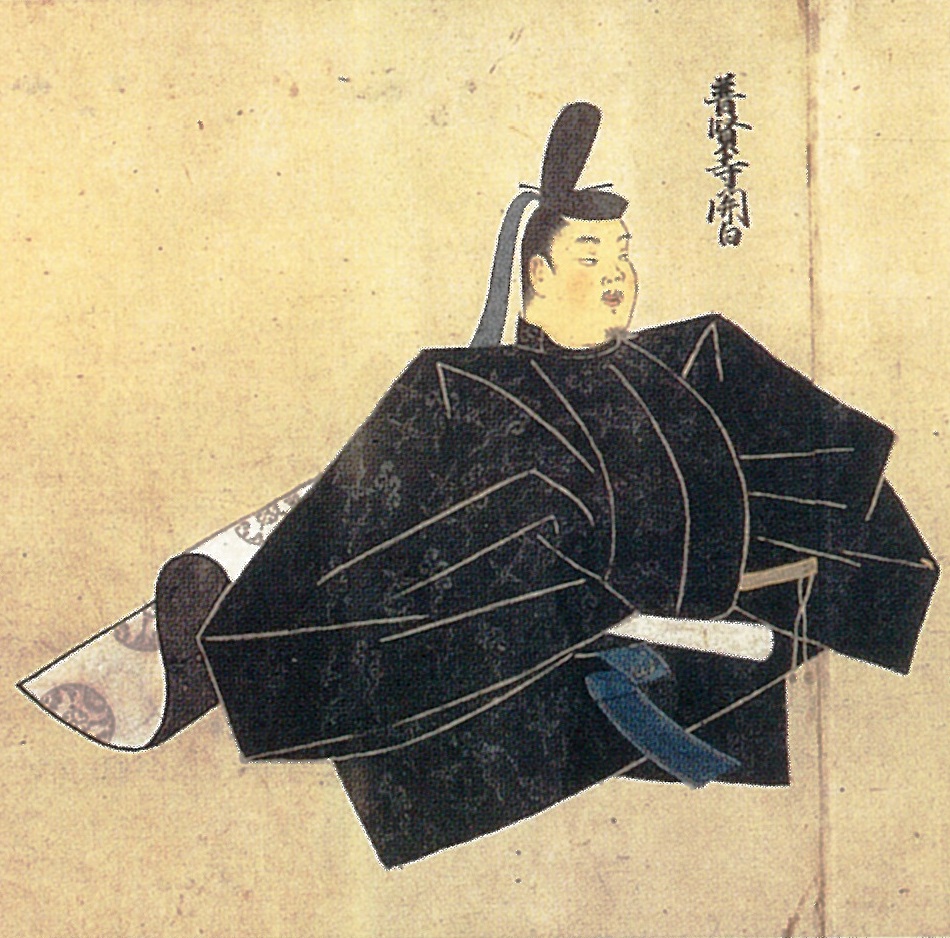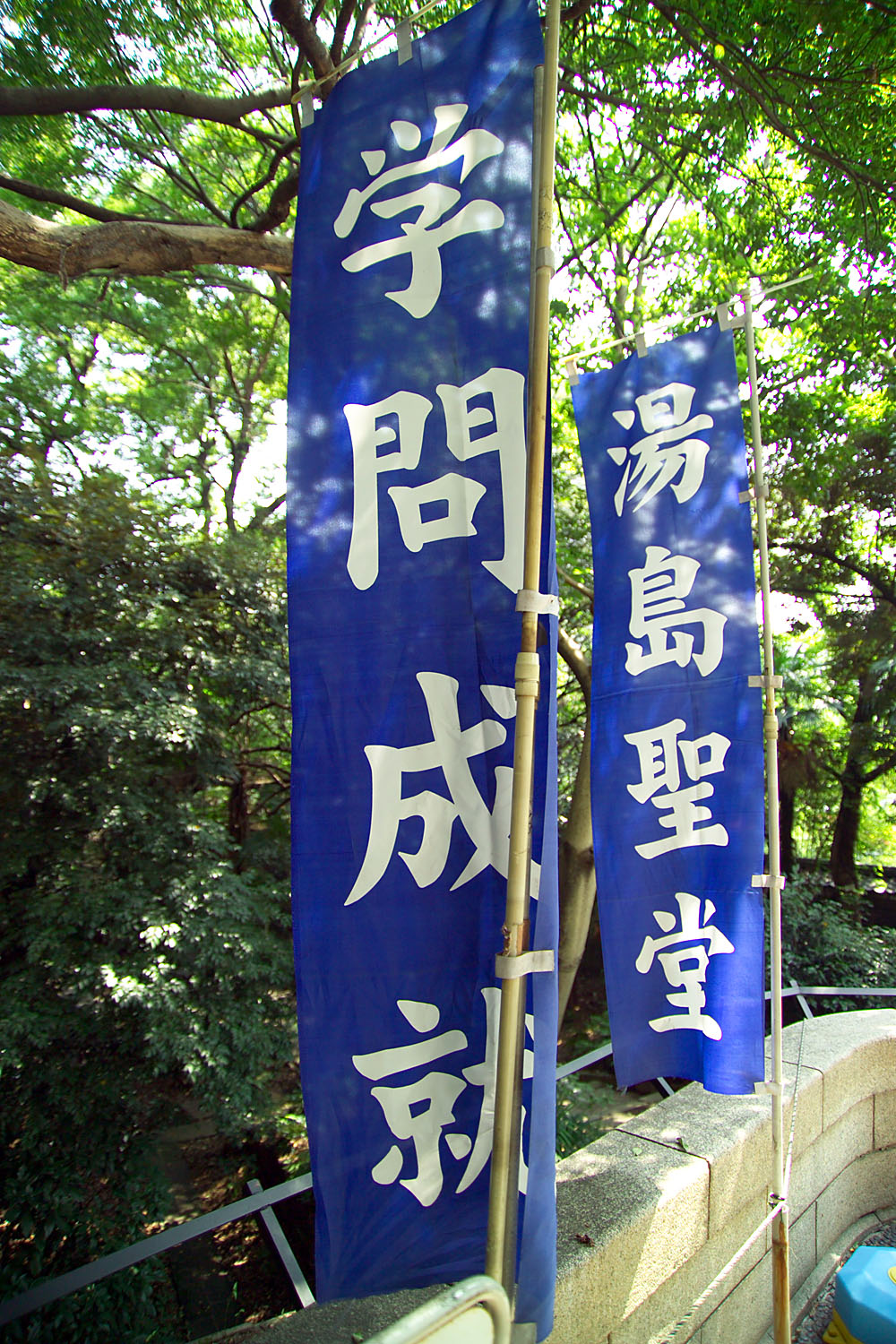|
Konoe Iezane
, son of Motomichi, was a court noble ('' KugyŇć'') of the early Kamakura period. His sons include: Takatsukasa Kanehira, and Konoe Kanetsune. In 1206 when KujŇć Yoshitune died, he became the head of the Fujiwara family and SesshŇć. The same year he was appointed Kampaku. In the JŇćkyŇę War (1221) he opposed to Emperor Go-Toba, costing him the post. After the war he was reappointed SesshŇć. * 1206 (''Ken'ei 1, 3rd month''): Iezane becomes regent for the emperor.Titsingh, Isaac. (1834). ''Annales des empereurs du japon'', p. 228. * 1206 (''Ken'ei 1, 12th month''): Iezane ceases to function as ''sesshŇć''; and instead, he becomes '' kampaku'' (chancellor). * 1221 (''JŇćkyŇę 3, 4th month''): Iezane loses his position as ''kampaku;'' and KujŇć Michiie takes on the role of regent. * 1221 (''JŇćkyŇę 3, 7th month''): The ''sesshŇć'' Michiie is replaced by Iezane. * 1221 (''JŇćkyŇę 3''): In the winter of this year, Iezane is named '' DaijŇć Daijin.''Titsingh, p. 239. * 1223 ('' JŇ ... [...More Info...] [...Related Items...] OR: [Wikipedia] [Google] [Baidu] |
Konoe Motomichi
was a ''KugyŇć'' (high-ranking Japanese official) from the late Heian period to the early Kamakura period. His father was Motozane, the founder of Konoe family, and his mother was a daughter of Tadataka. Among his sons is Iezane. His wife is the sixth no Sadako. In 1179, Motomichi was promoted to kampaku, regent, as a result of the coup led by Kiyomori, the father of his stepmother who also his father-in-law. In February of the following year he took the position of sesshŇć, regent-ship for Emperor Antoku. In 1208, he ordained as a Buddhist monk and took the Dharma name GyŇćri (Ť°ĆÁźÜ). Parents *Father: Konoe Motozane *Mother: Fujiwara no Tadataka *Wife: Taira no Sadako, daughter of Taira no Kiyomori (ŚĻ≥ŚģĆŚ≠ź) *Concubine: Daughter of Minamoto no Akinobu **Konoe Iezane , son of Motomichi, was a court noble ('' KugyŇć'') of the early Kamakura period. His sons include: Takatsukasa Kanehira, and Konoe Kanetsune. In 1206 when KujŇć Yoshitune died, he became the head of ... [...More Info...] [...Related Items...] OR: [Wikipedia] [Google] [Baidu] |
Emperor Go-Horikawa
(March 22, 1212 ‚Äď August 31, 1234) was the 86th emperor of Japan, according to the traditional order of succession. His reign spanned the years from 1221 CE through 1232 CE. This 13th-century sovereign was named after the 10th-century Emperor Horikawa and ''go-'' (ŚĺĆ), translates literally as "later"; and thus, he is sometimes called the "Later Emperor Horikawa". The Japanese word ''go'' has also been translated to mean the "second one;" and in some older sources, this emperor may be identified as "Horikawa, the second," or as "Horikawa II." Genealogy Before his ascension to the Chrysanthemum Throne, his personal name (his ''imina'') was , also known as Motsihito''-shinnŇć''.Titsingh, p. 238. The third son of Imperial Prince Morisada (ŚģąŤ≤썶™Áéč) (Go-Takakura-in, ŚĺĆťęėŚÄČťôĘ), the second son of Emperor Takakura. *Empress (''JingŇę''): SanjŇć (Fujiwara) Ariuko (šłČśĚ°ÔľąŤó§ŚéüԾȜúČŚ≠ź) later Ankimon‚Äôin (ŚģČŚĖúťĖÄťôĘ), Sanjo Kinfusa‚Äôs daughter *Empress (''ChŇęgŇę''): ... [...More Info...] [...Related Items...] OR: [Wikipedia] [Google] [Baidu] |
1179 Births
Year 1179 ( MCLXXIX) was a common year starting on Monday (link will display the full calendar) of the Julian calendar. Events By place Levant * April 10 – A Crusader army led by King Baldwin IV (the Leper) is ambushed by Muslim forces in a narrow valley in the forest of Banyas. Baldwin is only able to extricate his forces owing to the heroism of Humphrey II, lord of Toron, who holds up the Muslims with his bodyguard till Baldwin and his army escape. Humphrey suffers mortal wounds and dies on April 22. He is succeeded by his 13-year-old grandson Humphrey IV. * June 10 – Battle of Marj Ayyun: A Crusader army (some 10,000 men) led by Baldwin IV is defeated by Muslim forces under Saladin near the Litani River (modern Lebanon). The Knights Templar join the battle, but they are driven back in confusion. Baldwin narrowly escapes being captured in the route. Amongst Saladin's prisoners are Odo de St. Amand, Grand Master of the Templars, and Lord Baldwin of Ibe ... [...More Info...] [...Related Items...] OR: [Wikipedia] [Google] [Baidu] |
Konoe Family
is a Japanese aristocratic family.Edmund Papinot, Papinot, Jacques Edmond Joseph. (1906). ''Dictionnaire d‚Äôhistoire et de g√©ographie du Japon''; Papinot, (2003)"Konoe," ''Nobiliare du Japon'', p. 24 retrieved 2013-8-13. The family is a branch of Hokke (Fujiwara), Hokke and, by extension, a main branch of the Fujiwara clan.Louis-Fr√©d√©ric, Nussbaum, Louis-Fr√©d√©ric. (2005)"Go-sekke"in ''Japan Encyclopedia'', p. 260. History The Konoe claim descent from Konoe Iezane (1179‚Äď1242),. The origin of the family name was the residence of Iezane's grandfather Konoe Motozane, which was located on a road in Kyoto named "Konoe-ŇĆji" (ŤŅĎŤ°õŚ§ßťĀď). Despite Konoe at first being the senior line of the Fujiwara clan, the clan was eventually split up into Five regent houses during the Kamakura period, with each of the five families having the right to assume the SesshŇć and Kampaku, regency. During the following Nanboku-chŇć period, a succession dispute of Konoe emerged, between Konoe Tsu ... [...More Info...] [...Related Items...] OR: [Wikipedia] [Google] [Baidu] |
Fujiwara Clan
was a powerful family of imperial regents in Japan, descending from the Nakatomi clan and, as legend held, through them their ancestral god Ame-no-Koyane. The Fujiwara prospered since the ancient times and dominated the imperial court until the Meiji Restoration in 1868. They held the title of Ason. The abbreviated form is . The 8th century clan history ''TŇćshi Kaden'' (Ťó§śįŹŚģ∂šľĚ) states the following at the biography of the clan's patriarch, Fujiwara no Kamatari (614‚Äď669): "Kamatari, the Inner Palace Minister who was also called ‚ÄėChŇęrŇć'',''‚Äô was a man of the Takechi district of Yamato Province. His forebears descended from Ame no Koyane no Mikoto; for generations they had administered the rites for Heaven and Earth, harmonizing the space between men and the gods. Therefore, it was ordered their clan was to be called ŇĆnakatomi" The clan originated when the founder, Nakatomi no Kamatari (614‚Äď669) of the Nakatomi clan, was rewarded by Emperor Tenji with the honori ... [...More Info...] [...Related Items...] OR: [Wikipedia] [Google] [Baidu] |
Royal Asiatic Society
The Royal Asiatic Society of Great Britain and Ireland, commonly known as the Royal Asiatic Society (RAS), was established, according to its royal charter of 11 August 1824, to further "the investigation of subjects connected with and for the encouragement of science, literature and the arts in relation to Asia." From its incorporation the society has been a forum, through lectures, its journal, and other publications, for scholarship relating to Asian culture and society of the highest level. It is the United Kingdom's senior learned society in the field of Asian studies. Fellows of the society are elected regularly. Fellows include highly accomplished and notable scholars of Asian studies. They are entitled to use the post-nominal letters ''FRAS''.The Oxford Dictionary of Abbreviations, 2nd edition, Market House Books Ltd and Oxford University Press, 1998, ed. Judy Pearsall, Sara Tulloch et al., p. 175Debrett's Peerage and Baronetage 2011, Debrett's Peerage Ltd, p. 26The Inte ... [...More Info...] [...Related Items...] OR: [Wikipedia] [Google] [Baidu] |
Nipon O Da√Į Itsi Ran
Nipon may refer to: People * Albert Nipon * Nipon Goswami * Nipon Malanont * Nipon Pensuvapap * Nipon Charn-arwut See also * ''Nippon'', Japanese for Japan * Nippon Club (Manhattan) * Nihon ŇĆdai Ichiran , ', is a 17th-century chronicle of the serial reigns of Japanese emperors with brief notes about some of the noteworthy events or other happenings. According to the 1871 edition of the ''American Cyclopaedia'', the 1834 French translation of ..., table of the rulers of Japan * Nippon (other) {{Disambiguation ... [...More Info...] [...Related Items...] OR: [Wikipedia] [Google] [Baidu] |
Hayashi GahŇć
, also known as Hayashi Shunsai, śěó śė•śĖé, , was a Japanese Neo-Confucian philosopher and writer in the system of higher education maintained by the Tokugawa ''bakufu'' during the Edo period. He was a member of the Hayashi clan of Confucian scholars. Following in the footsteps of his father, Hayashi Razan, GahŇć (formerly Harukatsu) would devote a lifetime to expressing and disseminating the official neo-Confucian doctrine of the Tokugawa shogunate. Like his distinguished father, GahŇć's teaching and scholarly written work emphasized Neo-Confucianist virtues and order. Academician GahŇć became the unofficial rector of what would become Edo‚Äôs Confucian Academy, the ShŇćhei-kŇć (afterwards known as the Yushima SeidŇć).Nussbaum, Louis Fr√©d√©ric ''et al.''. (2005). ''Japan Encyclopedia,'' p. 300. This institution stood at the apex of the country-wide educational and training system which was created and maintained by the Tokugawa shogunate. GahŇć's hereditary title was ''D ... [...More Info...] [...Related Items...] OR: [Wikipedia] [Google] [Baidu] |
Isaac Titsingh
Isaac Titsingh FRS ( January 1745 ‚Äď 2 February 1812) was a Dutch diplomat, historian, Japanologist, and merchant.Nussbaum, Louis-Fr√©d√©ric. (2005). "Isaak Titsingh" in . During a long career in East Asia, Titsingh was a senior official of the Dutch East India Company ( nl, Vereenigde Oostindische Compagnie (VOC)). He represented the European trading company in exclusive official contact with Tokugawa Japan, traveling to Edo twice for audiences with the shogun and other high bakufu officials. He was the Dutch and VOC governor general in Chinsura, Bengal.Stephen R. Platt, ''Imperial Twilight: the Opium War and the End of China's Last Golden Age'' (NY: Knopf, 2018), 166-73. Titsingh worked with his counterpart, Charles Cornwallis, who was governor general of the British East India Company. In 1795, Titsingh represented Dutch and VOC interests in China, where his reception at the court of the Qing Qianlong Emperor stood in contrast to the rebuff suffered by British diplomat ... [...More Info...] [...Related Items...] OR: [Wikipedia] [Google] [Baidu] |
Konoe Nagako
Konoe Nagako (ŤŅĎŤ°õťē∑Ś≠ź; 1218 ‚Äď March 9, 1275) also known as Takatsukasa-in (ť∑ĻŚŹłťôĘ),The Clear Mirror: A Chronicle of the Japanese Court During the Kamakura' was Empress of Japan as the consort of Emperor Go-Horikawa (March 22, 1212 ‚Äď August 31, 1234) was the 86th emperor of Japan, according to the traditional order of succession. His reign spanned the years from 1221 CE through 1232 CE. This 13th-century sovereign was named after the 10th-century Emperor .... Notes Fujiwara clan Japanese empresses consort 1218 births 1275 deaths {{Japan-royal-stub ... [...More Info...] [...Related Items...] OR: [Wikipedia] [Google] [Baidu] |
Konoe Iemichi
, son of Motomichi, was a court noble (''KugyŇć'') of the early Kamakura period. His sons include: Takatsukasa Kanehira, and Konoe Kanetsune. In 1206 when KujŇć Yoshitune died, he became the head of the Fujiwara family and SesshŇć. The same year he was appointed Kampaku. In the JŇćkyŇę War (1221) he opposed to Emperor Go-Toba, costing him the post. After the war he was reappointed SesshŇć. * 1206 (''Ken'ei 1, 3rd month''): Iezane becomes regent for the emperor.Titsingh, Isaac. (1834). ''Annales des empereurs du japon'', p. 228. * 1206 (''Ken'ei 1, 12th month''): Iezane ceases to function as ''sesshŇć''; and instead, he becomes '' kampaku'' (chancellor). * 1221 (''JŇćkyŇę 3, 4th month''): Iezane loses his position as ''kampaku;'' and KujŇć Michiie takes on the role of regent. * 1221 (''JŇćkyŇę 3, 7th month''): The ''sesshŇć'' Michiie is replaced by Iezane. * 1221 (''JŇćkyŇę 3''): In the winter of this year, Iezane is named '' DaijŇć Daijin.''Titsingh, p. 239. * 1223 ('' JŇć ... [...More Info...] [...Related Items...] OR: [Wikipedia] [Google] [Baidu] |




